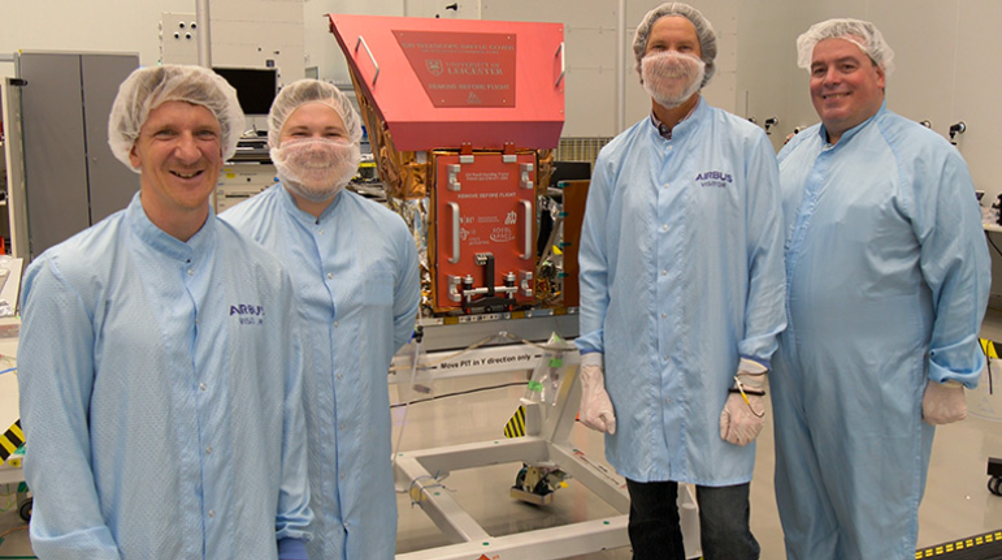The Soft X-ray Imager (SXI) on the Solar wind Magnetosphere Ionosphere Link Explorer (SMILE) is a wide-field X-ray telescope that uses micropore optics to spectrally map the location, shape, and motion of Earth's magnetospheric boundaries.
The development and build of the SXI telescope has been led by Leicester University in collaboration with the Mullard Space Science Laboratory (MSSL) and the Open University within the UK and several institutions across Europe.
UK space engineers provided key subsystems in the form of the main telescope assembly, X-ray optics module, advanced X-ray detector system and the associated readout electronics.
The telescope is the first instrument to be delivered using facilities at Space Park Leicester, as the Assembly, Integration and Test (AIT) team integrated space-flight subsystems to complete the SXI telescope within a purpose-built cleanroom.
The researchers built several models of the instrument and subjected them to environmental tests characteristic of the harsh environment of space. The final flight model has now been built and delivered to Airbus Defence and Space, Madrid, for integration onto the European Space Agency (ESA) platform that constitutes the main instrument hub on the SMILE spacecraft.

SMILE is a is a joint collaborative science mission between ESA and the Chinese Academy of Sciences (CAS) that will study how the solar wind interacts with the Earth’s magnetic environment. It is due to be launched in September 2025 on an ESA Vega-C rocket from Kourou, French Guiana.
Over the coming months, SXI and the other instruments which constitute the SMILE payload will have their systems tested in conjunction with the platform prior to integration of the whole spacecraft at the European Space Technology Centre (ESTEC) in the Netherlands.
In a statement, Dr Jennifer Carter from Leicester’s School of Physics and Astronomy, said: “Our Earth is protected from the solar wind by its magnetic field, which acts like a shield. SMILE will transform our understanding of this highly dynamic magnetosphere.
“SXI will image this magnetic shield, whilst a different camera will take ultraviolet pictures of aurora in the Northern Hemisphere. For the first time ever, we will see how changes to this shield cause effects in the upper atmosphere at the same time.”
Dr Caroline Harper, head of Space Science, UK Space Agency, added: “Space weather was responsible for the beautiful auroras that got the whole of the UK staying up, and looking up, in May 2024. It also brings potential risks such as radio blackouts, disruptions to satellites, and power grid failures. So it is vital we build our understanding and gain new insights into the solar winds that bombard our planet’s magnetosphere.
“The UK Space Agency has supported the delivery of this instrument with approximately £13m of funding, building on our mission to invest in cutting-edge technologies and world class science that bring the benefits of space back to citizens on Earth. We look forward to the next steps in the project.”
More from Aerospace











Guest blog: exploring opportunities for hydrogen combustion engines
"We wouldn't need to pillage the environment for the rare metals for batteries, magnets, or catalisers". Batteries don't use rare...